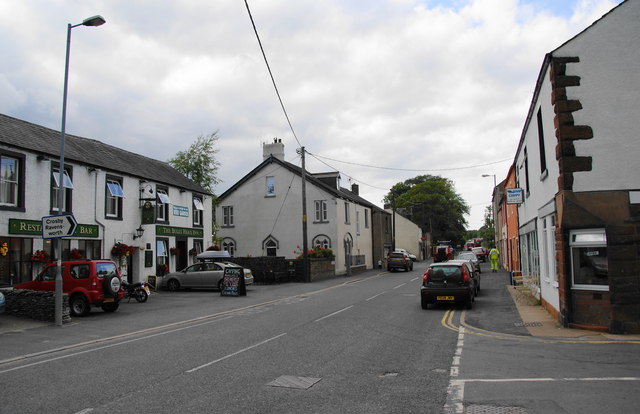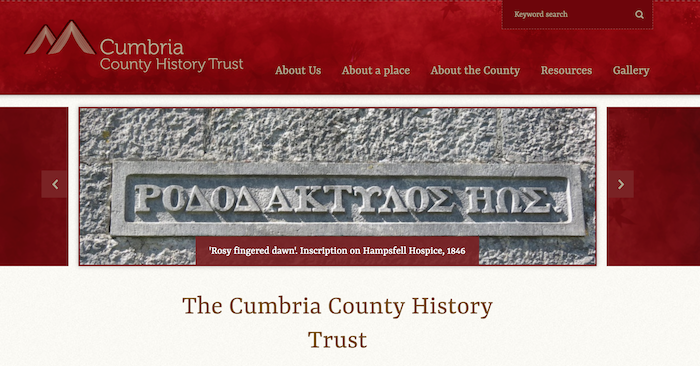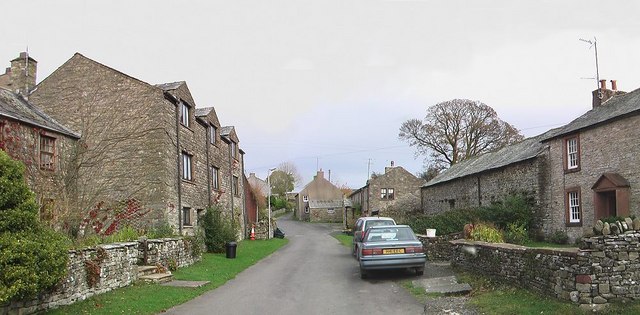Topics > Civil Parishes in Cumbria > Shap Civil Parish
Shap Civil Parish
Parish boundaries may have changed - for the latest map see the Parish Council or Westmorland & Furness Council.
About the Parish
| Main Settlements: | |
| Population: |
1,218 (2021 Census) 1,264 (2011 Census) 1,221 (2001 Census) |
| Area: | 8.4 km2 |
| Parish Council: | Shap Parish Council - a joint council also covering Shap Rural Civil Parish |
| Unitrary Authority: | Westmorland and Furness Council |
| Ceremonial County: | Cumbria |
Historical |
|
| Ancient Parish: |
This ancient parish covered a wider geographical area compared to the current civil parish. As well as Shap, it included the chapelry of Swindale, and part of Mardale. Ancient parishes refer to the parishes before the split between ecclesiastical (church) and civil parishes in the 19th century. They had a parish church and often were composed of multiple townships and chapelries. In many cases, townships and parishes were originally based on the territory of manors from the feudal system during medieval times. Civil parishes were created following the Poor Law Amendment Act 1866, in which Church of England parishes, extra-parochial areas, townships and chapelries, became "civil parishes" which could set their own poor rate (tax). Then the reforms of Local Government Act 1894 established elected civil parish councils (or parish meetings for parishes with less than 300 residents) and created urban and rural districts. Boundaries of parishes and civil parishes may have changed over time. |
| Ancient District: |
West (ward) |
| Poor Law Union: |
West Ward Poor Law Union, formed in 1836. West Ward Union Workhouse was located on Home Lane in Shap, built in 1877 to house up to 60 inmates. This replaced an earlier workhouse at Eamont Bridge. Under the Poor Law Amendment Act of 1834 parishes were grouped into Unions, each of which had to build a workhouse if they did not already have one. It ended the old system of locally provided poor relief which had come under strain as numbers out of work grew, following increasing mechanisation of agriculture and the economic downturn after the Napoleonic Wars, along with changing social attitudes. The workhouse provided those unable to support themselves financially with accommodation and work. Inmates were generally segregated into men, women, boys and girls. The workhouse system was abolished by the Local Government Act 1929, but many workhouses lived on as ‘Public Assistance Institutions’ until the National Assistance Act 1948. |
| County: |
Westmorland, until 1974, then: Cumbria, which was created on the 1st of April 1974, following the Local Government Act 1972. The new county absorbed Cumberland and Westmorland, and added some parts of Lancashire and the West Riding of Yorkshire. Cumbria County Council was abolished in 2023 and replaced by 2 new Unitary authorities. Cumbria remains a ceremonial county; retaining ceremonial boundary and the roles and responsibilities of the Lord Lieutenant and High Sheriff of Cumbria - based on 'The Cumbria (Structural Changes) Order 2022'. |
|
District Council: |
Shap Urban District (1905 - 1935) North Westmorland Rural District (1935 - 1974). This absorbed Shap UD and West Ward RD. Eden District (1974 - 2023). Eden and the 5 other district councils of Cumbria, along with the county council, were abolished as part of local government reorganisation in 2023; and replaced by two unitary authorities on 1st April 2023. |
|
Unitary Authority: |
Westmorland and Furness Council was created on the 1st April 2023. The 'new' Westmorland & Furness unitary authority area includes the historic county of Westmorland, along with parts of historic Cumberland, including Penrith and it's surrounding area, and also parts of historic Yorkshire and Lancashire. |
See also: ![]() Historic Buildings and Monuments in Shap Civil Parish. Note: listed buildings are generally the responsibility of the county council / district council, rather than the parish council.
Historic Buildings and Monuments in Shap Civil Parish. Note: listed buildings are generally the responsibility of the county council / district council, rather than the parish council.

from http://www.shapcumbria.co.uk/
Shap Parish Council
- "...Shap Parish Council administers the Parishes of SHAP and SHAP RURAL
There are TEN elected councillors, SEVEN councillors represent Shap Parish and THREE represent Shap Rural Parish...."
Added by
Peter Smith

Co-Curate Page
Shap
- Overview About Shap Map Street View Shap is a linear village and civil parish located among fells and isolated dales in Eden district, Cumbria, England. The village lies along …

from https://www.cumbriacountyhist…
Shap
- Ancient parish in West ward, Westmorland, including chapelries of Swindale and Mardale. Divided 1904 into Shap Urban and Shap Rural CPs; this entry treats whole of ancient parish.....manor of Shap …
Added by
Simon Cotterill

Co-Curate Page
Keld, Cumbria
- Overview Map Street View Keld is a hamlet in Cumbria, situated near the River Lowther, located about 9½ miles south of Penrith and ¾ mile south-west of the village of …


from http://www.shapcumbria.co.uk/
Shap Parish Council
- "...Shap Parish Council administers the Parishes of SHAP and SHAP RURAL
There are TEN elected councillors, SEVEN councillors represent Shap Parish and THREE represent Shap Rural Parish...."
Added by
Peter Smith

Co-Curate Page
Shap
- Overview About Shap Map Street View Shap is a linear village and civil parish located among fells and isolated dales in Eden district, Cumbria, England. The village lies along …

from https://www.cumbriacountyhist…
Shap
- Ancient parish in West ward, Westmorland, including chapelries of Swindale and Mardale. Divided 1904 into Shap Urban and Shap Rural CPs; this entry treats whole of ancient parish.....manor of Shap …
Added by
Simon Cotterill







